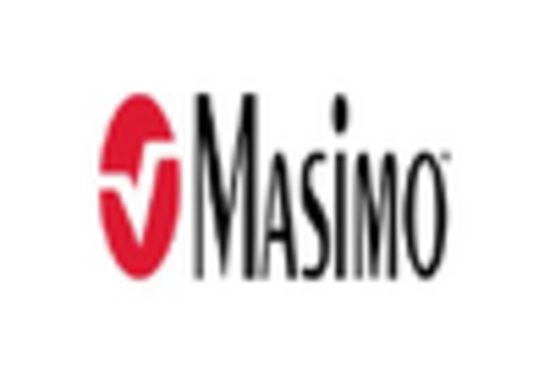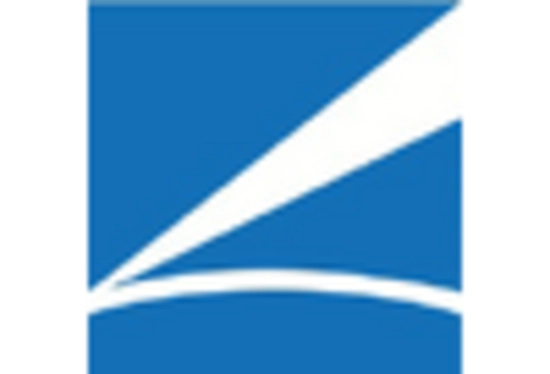Rising Prevalence of Respiratory Diseases
The Respiratory Rate Sensor Market is significantly influenced by the rising prevalence of respiratory diseases, including asthma, chronic obstructive pulmonary disease (COPD), and sleep apnea. According to recent health statistics, respiratory diseases account for a substantial portion of global morbidity and mortality. This alarming trend has led to an increased focus on early detection and continuous monitoring of respiratory conditions. Consequently, healthcare providers are increasingly adopting respiratory rate sensors as essential tools for managing these diseases. The market is expected to expand as healthcare systems prioritize the integration of respiratory monitoring technologies to enhance patient outcomes.
Growing Demand for Home Healthcare Solutions
The Respiratory Rate Sensor Market is witnessing a growing demand for home healthcare solutions, driven by an aging population and a shift towards patient-centered care. As more individuals prefer to manage their health from the comfort of their homes, the need for reliable respiratory monitoring devices has intensified. This trend is further supported by advancements in telehealth technologies, which facilitate remote patient monitoring. The market for respiratory rate sensors is projected to grow as healthcare providers increasingly offer home-based monitoring solutions, allowing for timely interventions and improved patient management.
Technological Advancements in Sensor Technology
The Respiratory Rate Sensor Market is experiencing a surge in technological advancements, particularly in sensor technology. Innovations such as miniaturization and enhanced accuracy are driving the development of more sophisticated respiratory rate sensors. These advancements enable the creation of devices that are not only more efficient but also more user-friendly. For instance, the integration of artificial intelligence and machine learning algorithms into respiratory sensors allows for real-time data analysis and improved patient monitoring. As a result, the market is projected to grow at a compound annual growth rate of approximately 12% over the next five years, reflecting the increasing demand for advanced respiratory monitoring solutions.
Increased Investment in Healthcare Infrastructure
The Respiratory Rate Sensor Market is benefiting from increased investment in healthcare infrastructure across various regions. Governments and private entities are recognizing the importance of enhancing healthcare delivery systems, particularly in respiratory care. This investment is leading to the establishment of advanced healthcare facilities equipped with state-of-the-art respiratory monitoring technologies. As a result, the demand for respiratory rate sensors is expected to rise, driven by the need for improved patient care and monitoring capabilities. The market is likely to see substantial growth as healthcare systems evolve to incorporate these essential technologies.
Regulatory Support for Innovative Medical Devices
The Respiratory Rate Sensor Market is positively impacted by regulatory support for innovative medical devices. Regulatory bodies are increasingly streamlining the approval processes for new respiratory monitoring technologies, encouraging manufacturers to develop and introduce advanced respiratory rate sensors. This supportive regulatory environment fosters innovation and competition within the market, leading to the emergence of cutting-edge products. As a result, healthcare providers are more inclined to adopt these innovative solutions, further driving the growth of the respiratory rate sensor market. The ongoing collaboration between regulators and industry stakeholders is likely to enhance the overall landscape of respiratory monitoring.

















Leave a Comment